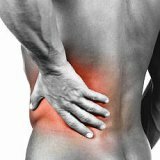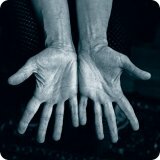Medical preparations for radiculitis treatment

It is well known that the quality of human life depends on the condition of the spine. This is due to the fact that the spinal cord is located in the spinal canal with numerous nerves departing from it. The integrity of these nerves, as well as the spinal cord itself, allows you to regulate the work of the whole organism and lead an active lifestyle. Damage to the spinal nerves can lead to catastrophic consequences, paralyzing a person. Inflammation or squeezing of nerves from the spinal cord often leads to the development of radiculitis.
This is a serious disease that significantly limits the patient's movements. People suffering from radiculitis, are assigned a variety of medicines and procedures. So, medical preparations for treatment of a radiculitis include novocainic blockades, anesthetizing and anti-inflammatory preparations, vitamins, compresses, ointments.
Novocaine blockades. This is a method of treating radiculitis and anesthetizing its symptoms, is that a solution of novocaine is injected into the patient's tissue. In the field of application, Vagosympathetic, lumbar and Novocain blockages are distinguished.
Vagosympathetic blockade with novocaine is performed in the position of the patient lying on the back. At the same time, the head should be turned as far as possible, which will be opposite to the area of the blockade. Under the patient's blades, you need to place a cushion or pillow, pull your arm downwards. Injection of novocaine is introduced into the anterior-lateral surface of the vertebrae of the neck.
The lumbar novocaine block is performed in the patient's side position. A cushion or pillow is placed under the waist of the patient. Only then can you administer the medicine.
Novocaine blockade is performed by injecting a solution of novocain into the patient's tissue and interstitial spaces along the circumference of the entire limb, while observing a certain level. At the time of introduction of novocaine, the limb must be stretched.
Novocain blockades are also classified according to other criteria. So, for example, distinguish a short novocain blockade, when the injection is done directly around the focus of inflammation. In addition, there are also intra-nasal, intra-eared, presacral and retromammary novocain blockades. Anesthetics. The patient, suffering from sciatica, mostly does not give rest to pain. Very often it becomes acute and protracted. Anesthetics are used to relieve pain in the treatment of radiculitis. Unfortunately, they do not show any therapeutic effect, but their use normalizes the patient's sleep, restores his psycho-emotional state and, on the whole, the nervous system. Most often, doctors prescribe the following pain medications: butapyrine, analgin, reopyrine, aspirin, pentalgin.
Treatment of radiculitis with anti-inflammatory drugs. In the treatment of radiculitis, the use of medicines for the removal of inflammation is given much attention and importance. People suffering from radiculitis, most often prescribed drugs such as ibuprofen, orthophene, diclofenac and indomethacin. Reception of these medicines is possible only on the recommendation of the attending physician.
Vitamins. The development and progression of radiculitis is accompanied by destructive processes in the body of a sick person. The tissues of his muscles and joints begin to lose their important properties, originally laid in the body. Therefore it is very important to maintain and restore them, to help the body maintain protective forces. In this regard, experts always recommend the use of various vitamins with radiculitis. An important role is assigned to group B vitamins, among which the most commonly prescribed cyanocobalamin( vitamin B12).
Ointments, compresses, rubbing. The use of ointments as medicines and the performance of rubbing and compresses are rather attributed to home procedures. But they do relieve inflammation and pain in the affected area. It is recommended to use the medicinal preparation "Finalgon"( ointment), as well as snake or bee venom as warming agents.


